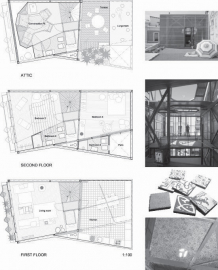TSM 3, Unstable House
TSM3 UNSTABLE HOUSE combines the restoration of the ground floor of a 59,80sqm terraced property in the centre of Madrid, and the construction of 2,5 new floors on top with 154sqm. The design dematerializes the original construction into a flexible home-cum-office that can change anytime.
All the elements that define the living space are in a state of flux. The architecture does not seek to define and limit through fixed elements such as structures, walls or gaps, but rather through the use of a series of devices producing actions or situations.
The facade is a reproduction of traditional 19th-century architecture to which the building must legally conform following municipal regulations for the historic centre. And yet, due to its light construction and contemporary manufacture, it can be modified by transforming the relationship between exterior and interior, privacy, and views. This provides, under the heat and light from the sun, an interface between the versatile interior, allowing us to modify the experience, adapting it, in a typically 21st century attitude.
A 19th CENTURY FAÇADE may be composed, following visual criteria based on load transmission.
A 20th CENTURY FAÇADE may be composed following geometric criteria. The walls are a skin, a fabric with abstract autonomous composition rules.
A 21st CENTURY FAÇADE will be automatically composed, as the result of the relation between inside and outside, keeping in mind environmental conditions: natural light, sun exposure, insulation, ventilation and humidity, as well as privacy or the wish to linger in an intermediate private-public position. Form and Function follow the Weather.
Municipal regulations require new buildings to use the traditional Madrid-style chalk-based rendering, a baroque trompe-loeil ashlar. We reduce the thickness of the chalk rendering to 1.5 mm on a sheet of extrusion polystyrene in galvanized steel frames. Sky blue is a traditional baroque colour in Madrid, but also the colour of insulation, joining traditional imaginary with the development of a culture of sustainability.
The building is constructed on top of an existing solid brick structure, with original 18th-century supporting walls, its ground floor being only half-accessible due to a right of use held by the neighbouring convent. Half the building is cantilevered over the convent and supported by strikingly visible blue-painted steel beams. In the new floors there is not a single brick. The 10cm-thin metal floor slabs blend in with the joinery, giving a greater sensation of lightness. The walls may be to easily transform the buildings technical characteristics. The main installations are concentrated within a practicable central passage which allows wet areas to be added or removed depending on programme needs with no grey energy waste. All building materials are reusable. The thick ground floor and basement brick walls provide masses of thermal inertia which can be reconducted through the central space, with sliding glass openings. The double-layered wall roof garden works as a greenhouse or as a solar chimney to create the draft through the basement from inlets to the narrow street. Water recycling within the building is foreseen.

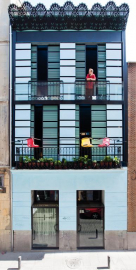
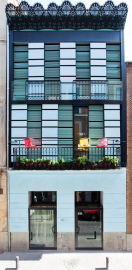
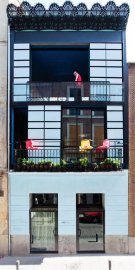
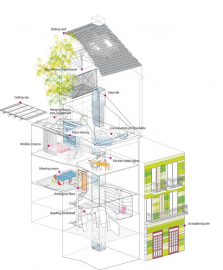
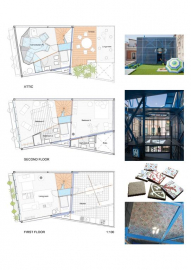
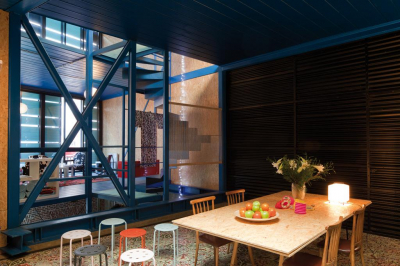
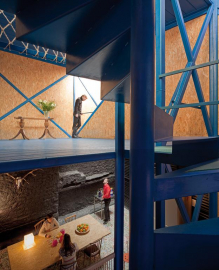
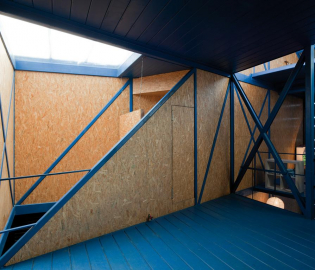
.jpg)
 copy.jpg)
